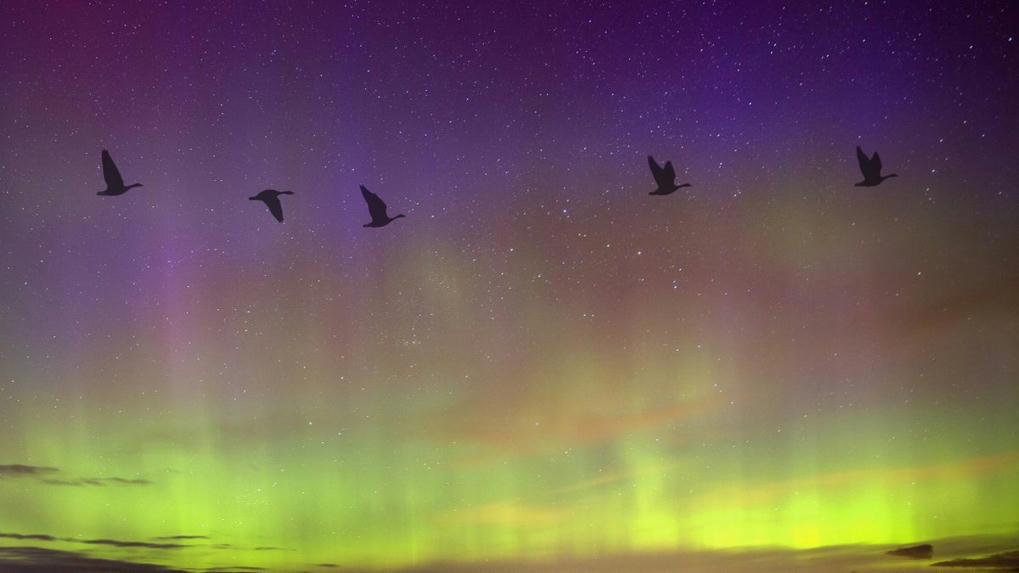
New research indicates that severe space weather events, such as solar flares, disrupt birds’ navigational skills during long migrations.
Previous research has indicated that when flying at night, birds (and many other animals) use Earth’s magnetic field for navigation. Because solar events disrupt the magnetic field — as well as produce auroras — birds have more difficulty navigating during them. The new study analyzed images taken from 37 NEXRAD Doppler weather radar stations, which can detect groups of migrating birds, as well as data from ground-based magnetometers, to study 23 years of bird migration across the U.S. Great Plains. The 1,000-mile (1,600-kilometer) span from North Dakota to Texas is considered a major migratory corridor for birds.
“The biggest challenge was trying to distill such a large dataset — years and years of ground magnetic field observations — into a geomagnetic disturbance index for each radar site,” Daniel Welling, University of Michigan space scientist said in a statement. “There was a lot of heavy lifting in terms of assessing data quality and validating our final data product to ensure that it was appropriate for this study.”
The work paid off. The researchers discovered that the number of migrating birds in this region decreases by 9 to 17 percent during severe space weather events. They also noticed increased rates of birds becoming lost during migration, a phenomenon known as migratory bird vagrancy.
Read the full article at: www.space.com